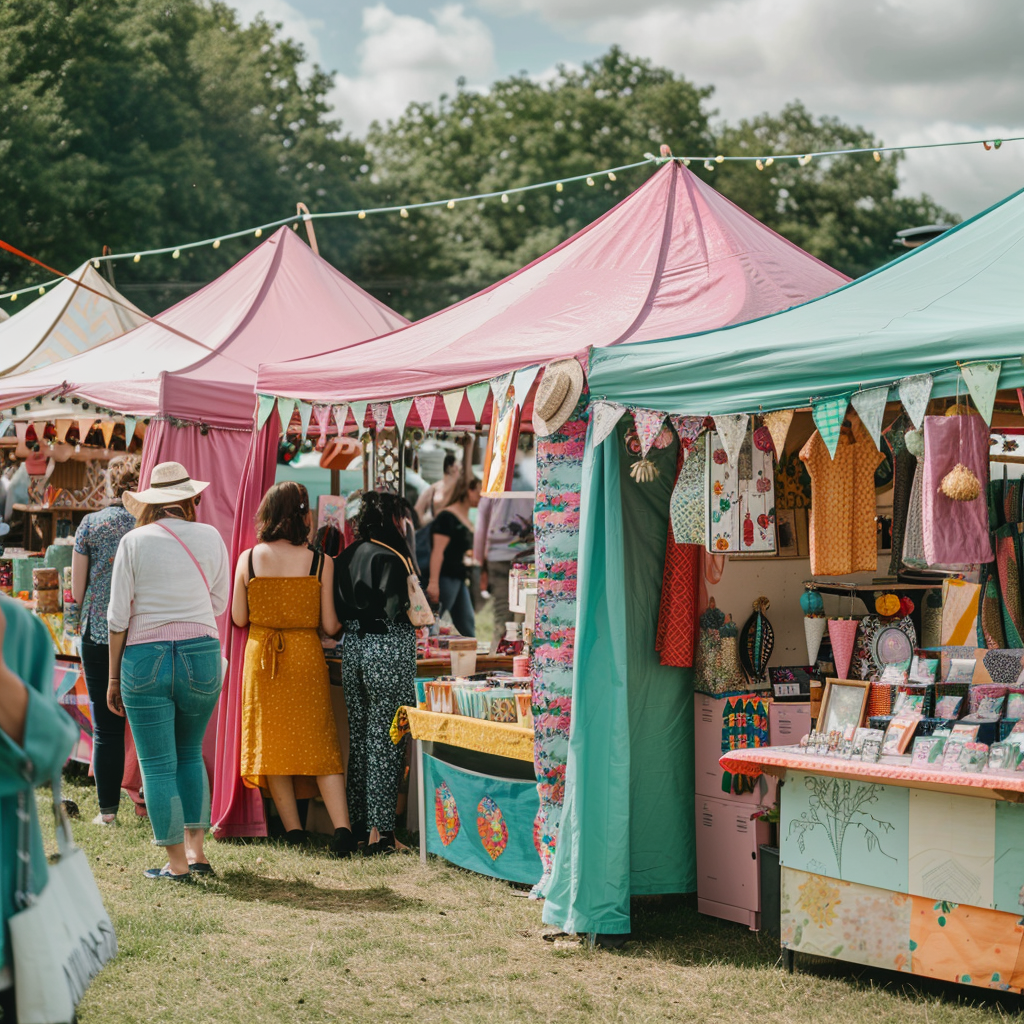This post and photos may contain Amazon or other affiliate links. If you purchase something through any link, I may receive a small commission at no extra charge to you. Any supplies used may be given to me free of charge, however, all projects and opinions are my own.
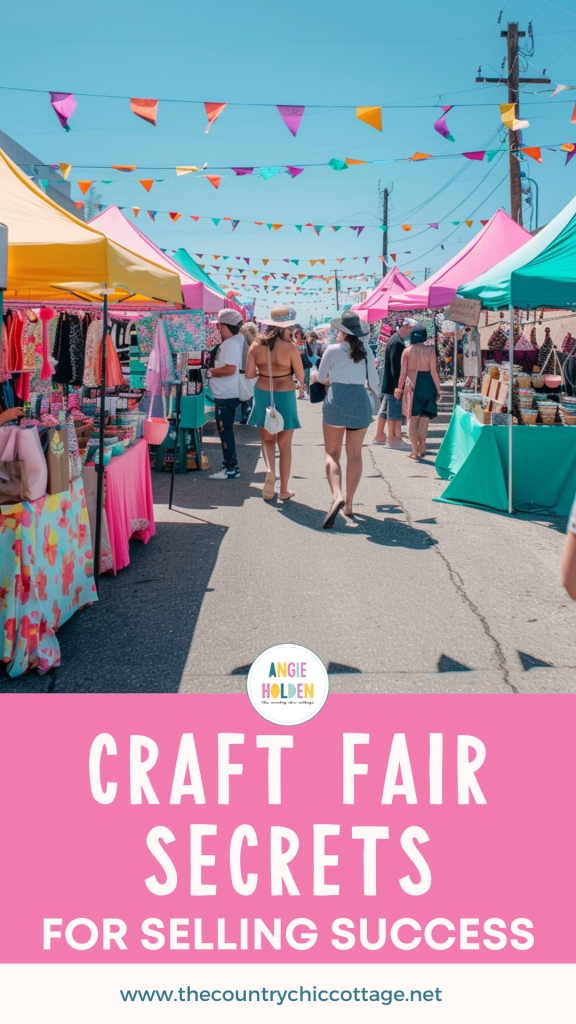
Are you looking to start a business or grow your small business by attending local craft fairs? Today, Cori from Hey, Let’s Make Stuff and I are talking with our friend Crystal Summers from Life Love Creations about how to sell at craft fairs.
This is episode 3 of Crafting for Profit Live. If you missed our previous episodes make sure you check them out to learn about adopting a business mindset and starting your craft business the right way.
You can watch our live conversation or read the best tips from Crystal below the video:
10 Tips for Selling at Craft Fairs
Selling at craft fairs is a great way to start or grow your small business. You have an opportunity to meet your customers face-to-face, get feedback on products, and learn more about what customers are interested in.
Let’s jump into Crystal’s best tips for how to sell at craft fairs so you too can be successful!
1. How do you prep for a craft fair?
There are things you need to do before you head to ANY craft fair, let’s dive into those first.
Review the Contract for Things You Need to Bring
When you sign up for a craft fair, you should be supplied with a list of things that will be provided for you and things you need to bring yourself. Go through that list and make sure you have everything you need. You don’t want to show up to a craft fair without a table if you are expected to bring your own.
If you’re attending an outdoor craft fair and are required to bring your own tent, make sure you bring tent weights. Tents/canopies can easily be picked up by wind, even when they’re staked down and that can cause injuries if they hit someone.
Know How Large the Space Is
Sometimes at craft fairs, you have a space that is more than just a table space. If you have a space that is 10′ by 10′, you can do whatever you want in that space.
This is a great way to stand out. You can bring in shelves or even multiple tables. Whatever fits in that space you can set up. A great thing about height is that people can spot you from far away which makes you easy to find!
Set Up Before the Event
I always set everything up at my house before I go to craft fairs. This allows me to make adjustments for different products and how large the space is. Even after years of doing craft fairs, I still change things up from time to time.
Grab all the supplies you’re planning to use and set everything up. Once you have it how you like it, take photos so you can set it up the same way when you’re on site.
Will You Have Power?
If it’s not spelled out for you, make sure and ask whether or not you’ll have access to power at your booth. If you want to personalize items on-site, having power and how close you are to it is important.
Prepare for the Elements
If the craft fair is outside, you’ll want to be prepared for the elements. A tent helps with both rain and extreme heat. If your tent has sides, that can help with wind and cold. You may be surprised at how your traffic may increase because people are trying to get out of the elements.
Remember you may be surprised by unexpected weather. From an unexpected heatwave to a snowstorm in April, keep an eye on the weather leading up to the fair.
Bring Food and Water
Days can be long at craft fairs. Make sure you bring plenty of water and snacks to have on hand. When your booth is busy you may not be able to leave to get food.
How Long Do You Have to Set Up?
Most markets have a set time that you’re allowed to show up to get set up. It may be only an hour or two so practice the setup. Over time you’ll get faster but in the beginning give yourself plenty of time and lots of practice. Setting up for an outside craft fair can take longer than setting up a table inside.
2. How Do You Choose the Right Craft Fair?
Choosing the right craft fair can feel overwhelming. Here are a few tips and tricks for narrowing down your options.
How to Find Craft Fairs in Your Area
Word of mouth is a great place to start. You can begin by attending a craft fair and talking to some of the vendors. You can also find out who is in charge and reach out via social media or email.
Think outside the box, check out farmer’s markets and other things happening in your area where you may be able to set up a shop.
If your area has a Facebook group, that could be a great resource for finding craft fairs around you. If you follow other craft business owners, see what craft fairs and events they’re attending.
Finding a Reputable Craft Fair
When choosing a craft fair, you want to find someone reputable. You’ll be able to tell if they’re doing a good job promoting the event and supplying you with the information you need to promote it. One way to find this information is to go back to the previous years and see what they did to get the word out.
Whether or not they have a process in place for their own promotion and what they’re requiring from vendors can definitely impact the foot traffic a craft fair has.
I also really like to find someone who’s paying attention to the people they’re signing up for the event. Is there a vetting process for the items they’re selling to prevent a situation where they have 12 people selling candles or tumblers? Having a process in place to prevent the oversaturation of items helps lift everyone at a craft fair.
How Much Does the Craft Fair Cost?
If you’re just starting out, you may want to consider the cost of participating at a craft fair. Some craft fairs are free because they’re smaller and local. Typically they have less foot traffic but could be a great opportunity to see what items consumers are drawn to.
There are some craft fairs that cost a lot of money. They usually have more foot traffic. Whether or not that is worth it to you will depend on your budget.
Remember, the benefit of attending craft fairs isn’t always what you sell at the time. Sometimes making contacts at a craft fair can turn into bulk or custom orders down the road or may be a great business contact for you.
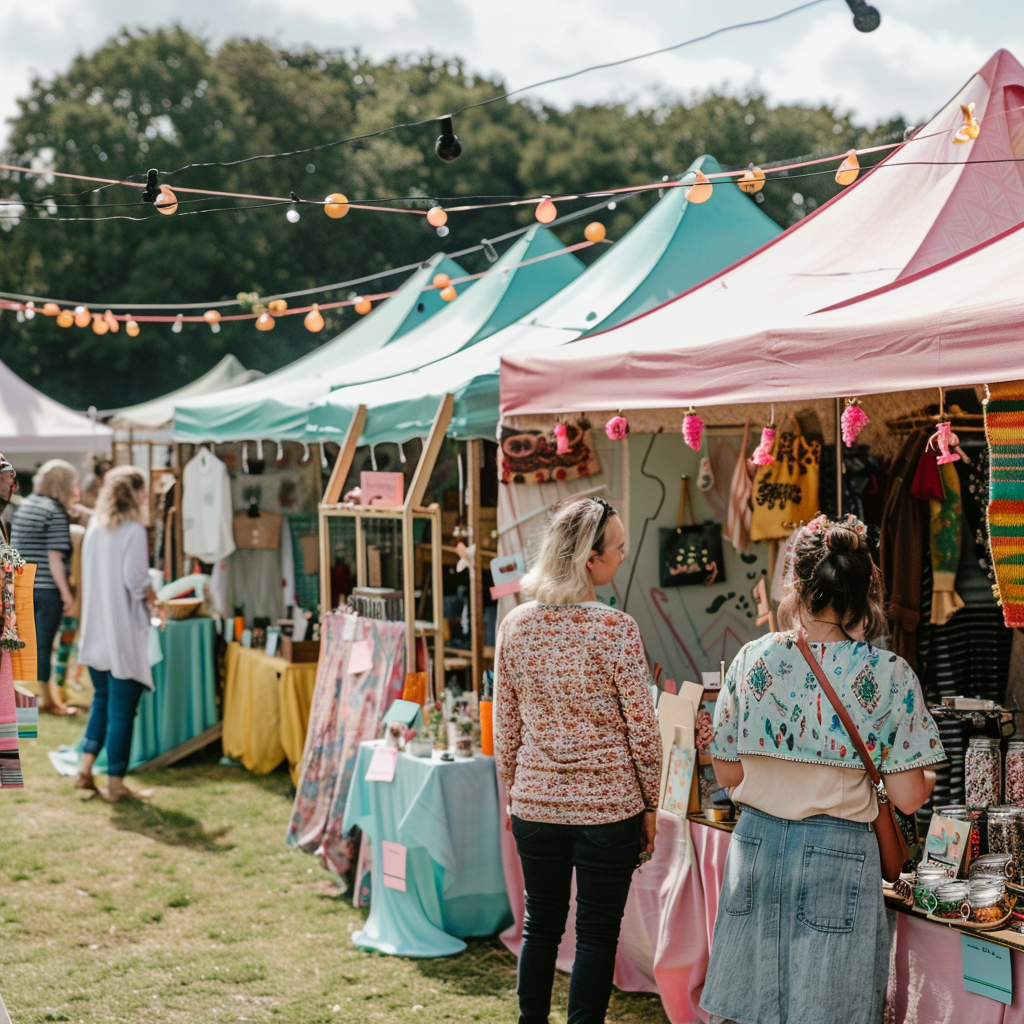
3. Are there Legal or Logistical Considerations to be Aware of?
We are by no means legal experts so please, before you begin talk to a lawyer to make sure you know what you’re legally required to do.
Business Insurance
Reputable event coordinators should make sure you have all the information you need for what is expected at their event. If you need separate business insurance, they should let you know that up front.
Sales Tax
You will need to collect and remit sales tax on any sales made during events. This is something you need to be doing for any sales you’re making.
I have seen people in Tennessee walking around at craft fairs asking for ID and for people to show how they’re collecting and remitting sales tax. You don’t want to get caught not being able to provide that information.
Other Restrictions
There are also other restrictions if you’re selling children or baby items, food, skincare, etc. You need to make sure you know all of those and are compliant so you don’t get yourself in legal trouble.
If you’re using tents, bookshelves, etc in your booth, make sure you know if there are any requirements needed like weights, anchors, etc to ensure the safety of vendors and customers.
4. How Can You Work with Other Vendors?
Crystal shared that the events she attends have the vendors promote the event which allows her to connect with the other vendors. She was able to connect with vendors on social media before the event and then meet them in person at the event.
This is a great way to build relationships with other creative people. You can get ideas of how they’re succeeding at craft fairs and potentially even make a friend who understands the business field you’re in. This is also a way that you can potentially find someone to share a booth with if you sell complementary items.
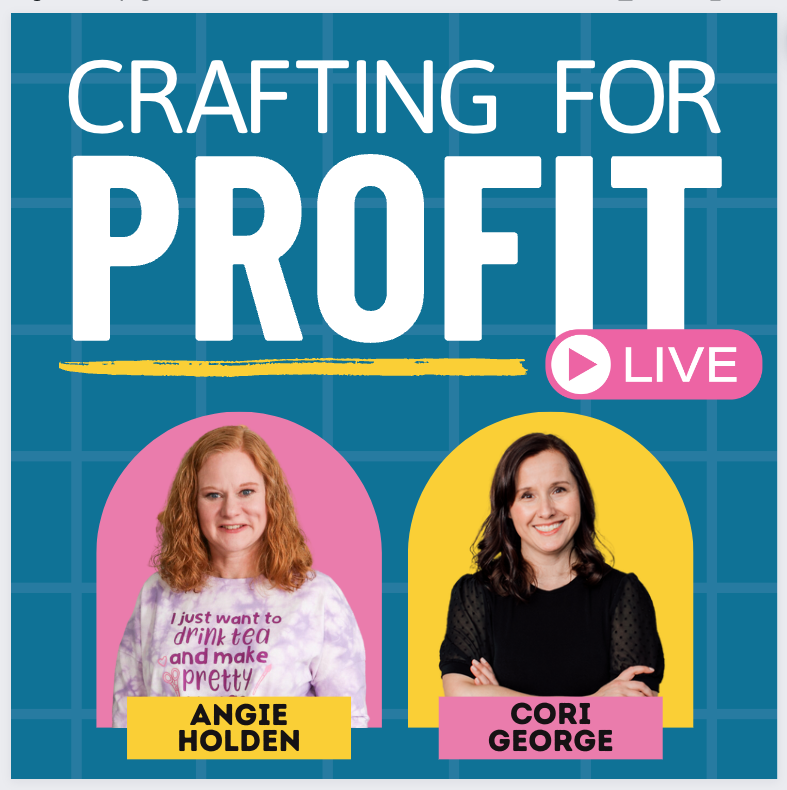
Craft your future by turning your passion into a paycheck! With more than 25 years experience and a DIY community of more than 1.5 million, Angie Holden and Cori George share handmade business strategies, craft business insights, and inspirational stories. Every other Monday, you’ll learn from experts how to use your crafts to financially support a creative life.
Click here to sign up so you don’t miss future episodes of Crafting for Profit Live!
5. How Do You Stand Out at a Craft Fair?
Standing out at a craft fair can be difficult. Let’s look at a few tips for making your booth attractive and one that customers are drawn to.
Branding
One of the best ways to stand out is to spend time at craft fairs and look at the booths you’re drawn to. Most of the time these will be those that are color coordinated and neat. Think about your branding and how to incorporate that into your booth.
We all love a good branding color palette. If you sell bright and colorful items, finding a tablecloth that coordinates will help bring everything together. If you have a farmhouse-style booth, you may want to look for white, black, and grey wood tones to bring everything together. Someone looking for farmhouse decor will be drawn to your booth.
We live in a visual world. You want things to look pretty and cohesive if someone comes to your booth and it’s chaotic or looks like someone just cleared out all their junk they’re unlikely to stick around long.
I mentioned earlier that height is helpful. It gives you more space to organize your items making things easier to see. You can also be spotted from further away making you easy to find as they’re walking around looking at items.
Booth Activities
When weather permits, Crystal likes to bring hands-on activities for children since the items she sells are geared toward kids. She brings her kids’ sensory play bin for other kids to play with. This brings kids to her booth and where children go, adults follow.
You can do giveaways with a spinning wheel where you give away a piece of candy or a discount on their purchase.
At the last craft fair Cori attended, she brought a bin full of free craft supplies. We all have craft items that we are maybe never going to use, having a freebie with purchase is a great way to eliminate items you don’t need and provide a bonus for your customer.
Greet Your Customers
It can feel awkward as a customer to walk into a booth and not see someone working there or if they feel like they’re interrupting because you’re sitting down doing something else.
There will always be times when you need a little break but for the most part, you want to greet your customers as they come into the booth. You don’t need to be pushy but make sure you interact with them so they know you’re there if they have any questions.
If the items you’re selling are small and you have a lot of room in your booth, you can set up a little area with chairs where people can sit and visit with you. Make it look intentional, not like they’re interrupting you.
If you’re sitting in your booth, move the chair toward the front of the booth so you’re easy to see. It will feel more welcoming to your customers.
Customize Onsite
Another way to stand out is to offer onsite personalization. I’ve been sucked into ordering custom Christmas ornaments because they would put my kids’ names on them right there.
If you have a Glowforge Plus or Glowforge Pro at home, you may want to invest in the Glowforge Aura or the new Glowforge Spark so you could personalize an ornament onsite. If you have electricity at your booth and a way to filter the laser, that would definitely draw people into your booth.
There are so many ways to spell different names these days there is no way you’d be able to have every spelling on hand. People with unique spelling are willing to pay a little extra to get things with the right spelling.
The Glowforge Spark and Glowforge Aura lasers are both lower wattage and small, they don’t require a lot of space to set up. You can pre-order Glowforge Spark through April 4th, 2024 for $599 here, this is the lowest price you’ll find on a laser cutter.
I don’t recommend the Spark if you need a laser for mass production. It is a small hobby craft laser that would be perfect for personalizing ornaments that you cut out with your larger laser at craft fairs.
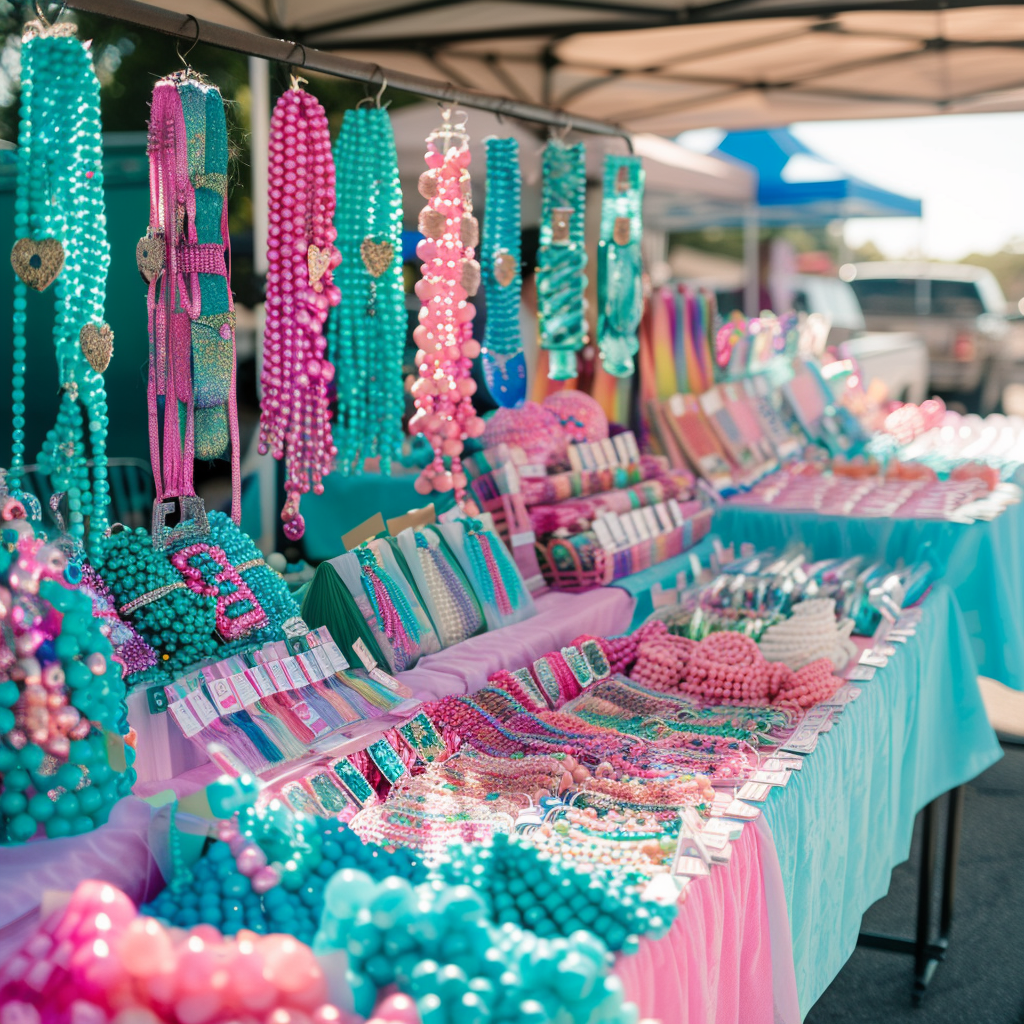
6. Make Sure Pricing is Clear
Crystal recommends making sure your pricing is clear. While it may seem like a conversation starter to have someone ask “How much is this?” it can make some people feel awkward and they may not buy.
You don’t have to label every single item. Having one price sheet in a photo frame in a couple of locations is an easy way for customers to see how much items cost. This also makes it easy for you to change prices as needed.
7. Promote Yourself
Another great way to have success at craft fairs is to promote yourself. If you offer personalization but can’t do it on-site because you don’t have power or a small laser, make sure your customers know that is something you offer.
Have a QR code to your website or social media platforms. Make sure your customers know how to reach you after the event.
I like to allow customers to place an order on the spot so they don’t forget about it later. If they can easily place an order, you’re more likely to make the sale than if they have to remember when they get home.
8. Make it Easy for People to Pay
There are a variety of different ways to take payments now and you don’t want to lose a sale because you can’t accept the payment the person is offering. Make sure you have cash to make change in case someone wants to pay with cash.
Square is a great way to take credit card payments including Apple Pay. Crystal has a referral link here for Square that will give you free processing on up to $1,000 in purchases. Square tracks your sales and taxes as well! If you’re just getting started, Square is easy to use and easy to set up, I really think you’ll like it.
If you don’t have Square, you can also print out a sheet with a QR code for different payment options like PayPal, Venmo, or the Cash App. This gives people an easy way to pay in whatever way is easiest for them.
9. Follow Up with Customers
Following up with customers is the very best way to make any craft fair worth your time.
I am passionate about collecting email addresses. There are email providers that allow you to sign up for free up to so many subscribers. I would start with one of those because it isn’t difficult to change email providers if you need to down the road.
Print out the QR code, have it in your booth, and have people sign up on-site. Offer a little discount on their purchase or a little freebie. It’s better to have them sign up and opt-in to the email subscription right then vs. collecting email addresses on a paper that you have to fill out later and have them opt-in then.
After the craft fair, email your list. Tell them about new sales, new products, discounts, etc. You can easily email them and thank them for coming to the craft fair, and offer a 10% off coupon for their next purchase on your site.
Other ways to follow up with customers would be via social media, and make it easy for people to follow your social media channels while they’re in your shop so they can follow you and get updates on where you’ll be next and what is going on in your business.
You can also add your business card to bags so they can find you later when they’re looking for a custom item or want to tag you in a social media post.
10. How to Get Started with a Limited Budget
One way to get started with a limited budget is to reach out to your community. If you need a table and tent for a one-day event, reach out to family and friends and see if you can borrow one instead of going out and buying one.
Find craft fairs that have a free or inexpensive cost to attend. I wouldn’t pay $300 for a craft fair if I wasn’t sure I could make more than that back. You can also look at splitting a booth with someone who has a complementary product for sale.
You may also look at bringing products that are less expensive to make, to begin with. Crystal shared that she currently has someone else print her stickers for her but there is an additional fee associated with that. Printing your own stickers would reduce that cost.
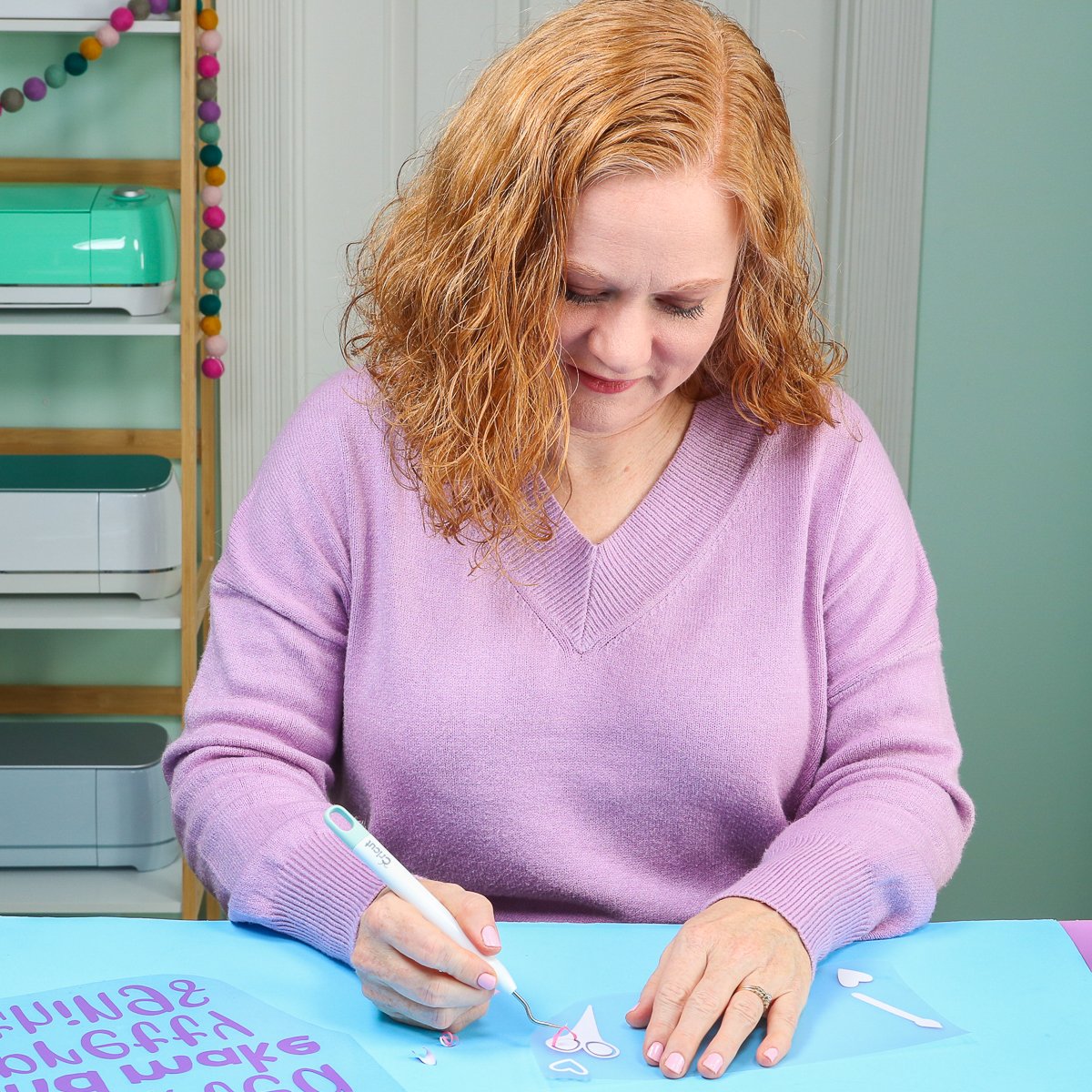
Craft Fair FAQ
Now that we’ve talked about all of Crystal’s best tips and tricks for having success selling at craft fairs, let’s answer some questions we received from viewers during the live broadcast.
What is the best way to do local consumer research?
The best way to do local consumer research is to attend craft fairs. You’ll see who comes into your booth and what they’re interested in, which things they’re drawn to. Getting in front of customers or potential customers is the best way to find out what they’re looking for.
Often people will ask for items in different colors than I have available, this allows me to offer to make the item for them in the color they’re looking for.
What do you do with products that don’t sell?
There are a variety of things you can do with products that don’t sell at craft fairs. You can save them for the next craft fair or do a flash sale on your social media.
If you have items that are seasonal or have a shelf life, a great way to sell them is to offer them to your social media following via stories. This is great for customers who aren’t local to take advantage of your craft fair products.
If you have a Facebook group for your business, you could also offer the products to those customers.
How do you decide how much of each product to bring?
This is a hard question. It is really dependent on what you’re selling, what the price point is, and even the foot traffic of the craft fair. If your items are more expensive or larger items, you may want to find some smaller, less expensive items that are easy to have a lot of on hand.
Experience at craft fairs is going to be the best way to learn how many of each item you should bring. I recommend keeping track of how many items you bring to a fair and what sells. That way, if you decide to attend that craft fair again next year you know what sold and if you should bring more or less than you did the year before.
The size of your booth will also dictate how much you can bring. One six-foot table is a lot less space than a 10′ x 10′ space. If you are attending your first craft fair, talk to other vendors and ask questions and see how much product they sold and what the foot traffic was like.
How do you find your customer?
We’ve talked before about finding your Avatar, your ideal customer, and making products for them. If you’re trying to sell something for everyone, people are going to get confused and possibly even overwhelmed when they enter your booth.
As you learn more about the people purchasing your items, you can create more items for those people. It’s all about finding your niche and staying there.
Do you have to pay sales tax if you have a resellers license?
We are not accountants or lawyers. Talk to someone in your state sales tax organization or your local small business organization. You don’t need to be scared of taxes you just need to make sure you’re collecting them.
A resale certificate is different than a sales tax. A resale certificate is something you get so you don’t have to pay sales tax on the products you’re buying for your business. It doesn’t impact whether or not you collect sales tax on the items you sell.
I am a big fan of getting a reseller license. They’re usually free or a small feel and that allows you to purchase supplies at wholesale pricing and you don’t have to pay sales tax.
Is there a simple way to track inventory?
We are all fans of Google Docs. It’s free and easy to access from your computer, phone, or tablet. You can have a tab for each fair or market you attend and the date it was held. Then you can reference what was brought and how many of each item sold.
How do you decide how much help to bring?
You may want to bring a friend or family member to help you man your booth. There is no way you’re going to go through an eight-hour or more craft fair day without needing to use the bathroom.
You can make friends with the person at the booth next to you for a quick run to the bathroom but if you want to be able to customize products on-site you’ll want someone else there to talk to customers or teach them how to do the customization while you talk to customers.
If you just make a quick trip, people will wait for you but you’ll want to make sure someone is keeping an eye on your booth.
Meet our Guest, Crystal Summers of Life Love Creations
I am so excited to introduce you to Crystal, you’re going to love her tips and tricks for selling at craft fairs.

Hi guys, I’m Crystal from Life Love Creations. I live here in Maryland right outside Washington, D. C. and I have two kids and a husband. I started Life Love Creations in 2020 when I was laid off the week of my 35th birthday, right in the midst of the world shutting down.
Like many others, I found myself at home with two kids and no idea what to do. So I started making Play-Doh with my daughter, who was four at the time, and it just evolved into a full-blown sensory Play-Doh kit business. It remained that way for a few years until Cori convinced me to invest in a laser craft machine.
Since then my products have evolved and changed. My business is still geared toward families and kids. But I do a little bit of everything these days. Most of the Play-Doh that I make now is for custom orders and party favors, or local craft markets, which we’re talking about today.
My Sensory Play-Doh kits are still the largest seller at craft fairs and markets even though it’s not what I sell the most on my website.
Crystal Summers, Life Love Creations
For those of you who don’t know, Crystal also works behind the scenes with both myself and Cori. You may have seen her name if you have joined any of our bigger camps as Crystal is our right-hand gal.
Crystal is a great example of someone who works a full-time job and runs a small business on the side. Crystal had some great tips for how to sell at craft fairs. I hope you enjoyed them as much as I did! Leave any further questions you may have below!

